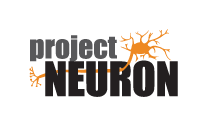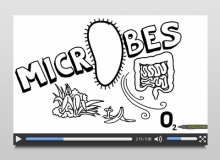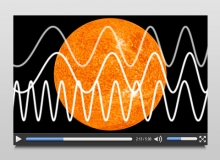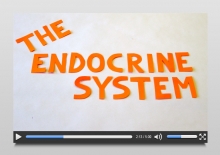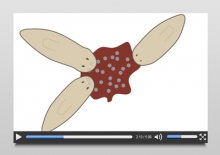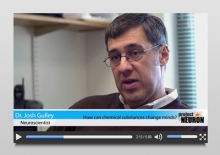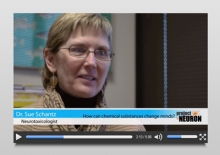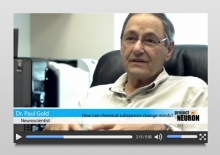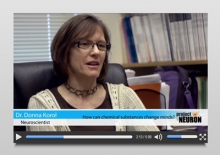Videos
These curriculum-incorporated videos spark discussions about scientific phenomena or support conceptual understanding.
-
An overview on how microbes play a big part of supporting life on Earth!
-
This video introduces students to the electromagnetic spectrum and especially the visible color spectrum. It begins to explore the physical properties of light and color, including emission, reflection, transmission, and absorption. A useful orientation for students before they use spectrophotometers during investigations.
-
This video helps students understand what they may have seen during their investigations with a spectrophotometer. Some common results are explained in terms of light emission, absorption, reflection, and transmission. View Part 1 before viewing this video.
-
A series of videos narrating the dissection of a cow eye (preserved and fresh). Includes safety instructions and various external and internal structures of the eye, plus bonus footage about how the eye connects to the brain.
-
A video with fun stop-animation footage about the endocrine system, homeostasis, and hormones.
-
This video describes the relevancy and method of fluorescent labelling, commonly used in scientific research. Dave Foerstoefel, a scientist in Phil Newmark's lab at the University of Illinois, explains how he uses the technique to study stem cells and regeneration in planarians.
-
University students and professors of neuroscience and toxicology are asked to respond to the broad and open-ended question "What changes our minds?" The interviewees provide a variety of responses including new experiences, listening to others, learning new things, the food you consume, teaching, and reading new information. This is the first video used in Lesson 1 of the "What changes our minds?" Toxicant and Drug units.
-
University students and professors of neuroscience and toxicology are asked to respond to the question "How do new experiences and knowledge change our minds?" The interviewees provide a range of responses that include how new knowledge and experiences can change our thoughts, the importance of quality sources of information, and the process of carefully evaluating information. This video is used in Lesson 1 of the "What changes our minds?" Toxicant and Drug units.
-
University students and professors of neuroscience and toxicology are asked to respond to the question "How can chemical substances change minds?" The interviewees provide a range of answers that discuss chemical changes in the brain, changes in behavior, and the effects of drugs and toxicants. This video is used in Lesson 1 of the "What changes our minds?" Toxicant and Drug units.
-
University professors of neuroscience and toxicology are asked to respond to the question "How do we define what changes our minds?" The interviewees describe how they and others within their field of research define the terms drugs, toxicants, toxins and poison.

